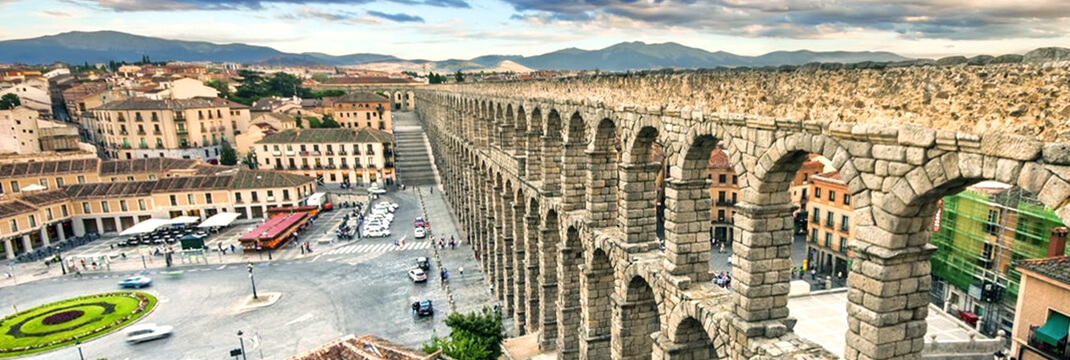
Ancient Roman Architecture
I. Introduction
Ancient Roman architecture has captured the minds of all progressive people throughout the centuries. Nowadays the beauty of the Ancient Roman Pantheon has attracted a lot of followers and visitors. The purpose of this paper is to demonstrate that architects throughout the world are inspired by the Roman Pantheon until modern times. Roman architectural masterpieces have advanced in the humanities as well as the world. Ancient Roman architecture has empowered professionals to reimagine and reawake it during the last 500 years.
II. Events that Led to the Advancement
A. The Background of the Time Period
The research asserts that the Roman Pantheon has started to inspire architects in the Middle Ages and during the Renaissance (Murphy &? Matthews, 2010, p. 32). At the end of the Middle Ages, people began to show a greater concern in arts, architecture, and literature. The Renaissance empowered people to wake up after a long sleep. The Roman Pantheon was in the center of people’s attention. The rebirth of new ideas and thoughts was observed in many countries. During the Renaissance period, people became more educated. This gave them an opportunity to enrich their knowledge about Ancient Roman culture. The architects of the Renaissance traveled to Rome and Greece in order to study ancient manuscripts. The research assumes that Pope Nicholas V was affected by a new trend, which motivated him to considerably increase the Vatican Library (Malacrino, 2010, p. 64).
B. The Climate of the Period that Led to the Advancement
The need for constructing new roads, buildings, and bridges empowered architects of different historical periods to study the Ancient Roman techniques in architecture, building, and engineering. The growth of cities led to the reproduction of Ancient Roman achievements. Though not all attempts were successful, many of them resembled the Ancient Roman masterpieces. Those who studied the Ancient Roman architecture tried to reproduce its style in modern Italy, the Middle East, and North Africa (Ulrich &? Quenemoen, 2013, p. 12). The Mediterranean world tried to bring its culture and architecture that had no analogs back to life. Thus, the rebirth of people’s interest in architecture, music, culture, and arts was the main cause that led to advancement.
III. Effects of the Advancement
A. The Process of the Advancement
The advancement of people’s interest in the Ancient Roman architecture and their desire to reproduce its masterpieces empowered people to create new monuments and buildings that could resemble the ancient ones. Malacrino assumed that the Roman Pantheon empowered the world masters to review the Ancient Roman techniques in architecture (2010, p. 41). Many schools that have studied the techniques of the Ancient Roman architects have been opened in many European countries. The research asserts, however, that these techniques were not easy to reproduce (Murphy &? Matthews, 2010, p. 123).
Along with the first order offer - 15% discount (code firstpaper15), you save an extra 10% since we provide 300 words/page instead of 275 words/page.
B. The Impact of the Advancement on Humanities
Many experts tried to rediscover Ancient Roman methods and techniques and implemented them in their work by creating bridges and aqueducts. Thus, many modern Italian and Greek bridges resemble those from the past. Contemporary architects in Western Europe and America, for instance, seemed to rediscover many techniques of the Ancient Roman architecture and used them in practice. Ulrich &? Quenemoen (2013, p. 39) argued that many contemporary buildings in North Africa resemble the Ancient Roman ones. The study reports that the rebirth of the Ancient Roman techniques in different architectural styles and schools has spread all over the world and captured the minds of many advanced artists (Malacrino, 2010, p. 134).
C. The Impact of the Advancement on the World
Many forms of buildings are associated with the authorities, as they used to be in Ancient Rome. The design, construction, and decoration of many buildings were very similar to the Roman Pantheon. However, all of them are only copies of the Ancient Roman masterpieces that are very hard to reproduce. Many historians consider that the materials used by the Ancient Romans are impossible to find (Murphy &? Matthews, 2010, p. 56). Nevertheless, the ancient practice and experience were adopted by many architects years later up until nowadays.
IV. The Evolution of the Advancement
A. The Development of the Advancement
The evolution of the advancement of the Roman period has been continuing until nowadays. New archeological discoveries empowered architects to improve their architectural skills and use improved techniques in their work. Historians continue to rediscover the Ancient Roman secrets. Moreover, modern architectural tools and techniques empower architects to reproduce improved masterpieces. New technology gives an opportunity to build modern buildings, bridges, and aqueducts in different parts of the world. The Seven Mile Bridge in Florida, for example, could impress the Ancient Romans by its structure and design. Over the past years, experts have been trying to understand the form of Rome’s production and implement it in the new vision of modern life. Numerous studies have shown that modern technological tools provide a new trend in architecture as a rebirth of the Roman style (Ulrich &? Quenemoen, 2013, p. 119).
V. The Effects of the Advancement
Ulrich and Quenemoen reported that modern American buildings that are made from glass and stone have a flavor of the Ancient Roman buildings (2013, p. 48). The evolution of advancement is in progress now. Many historians came to the conclusion that the Ancient Roman techniques should provide guidance for modern architects of different trends and schools. Nowadays many architects and artists try to understand the factors that led the Ancient Romans to create their masterpieces. Thus, they study Ancient Roman history, aesthetics, politics, and culture. All these dimensions are of great concern not only for architects, but also for students, scholars, and ordinary people all over the world.
VI. Conclusion
Ancient Roman architecture was of great concern for many progressive people throughout the centuries. Roman architectural masterpieces have important advancements in the humanities and have changed the world. Ancient Roman architecture has empowered professionals to reimagine and renew it during the last 500 years. Evolution of the advancement is the evidence that the Ancient Roman architecture, which has no analogs in the world history, is worth to be brought back to life and studied.



